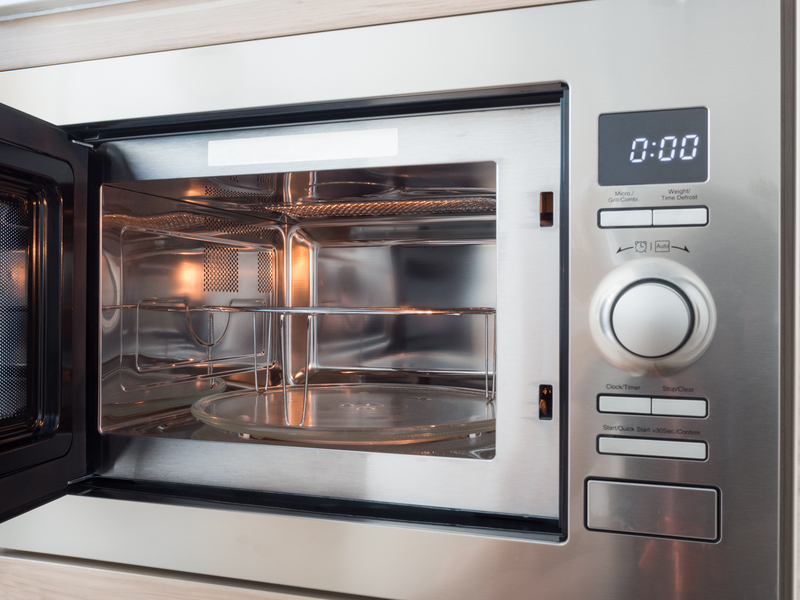Achieving Wellness Through Optimal Air Quality in Homes and Workspaces
Posted on 15/09/2025
Achieving Wellness Through Optimal Air Quality in Homes and Workspaces
Indoor air quality has steadily climbed to the top of wellness concerns in today's fast-paced world, especially as people spend more time indoors than ever before. From lingering odors and allergens to invisible pollutants, the quality of air in our homes and workspaces is directly linked to physical health, mental clarity, and overall productivity. If you've been searching for actionable ways to achieve wellness through optimal air quality, this comprehensive guide is for you.
Why Indoor Air Quality Matters for Your Wellness
The expression "you are what you breathe" has never been more relevant. Optimal air quality in homes and workspaces isn't just about comfort--it's essential for holistic wellness. Poor indoor air can lead to symptoms such as headaches, fatigue, respiratory issues, and even chronic illnesses. On the other hand, breathing in clean, fresh air can invigorate the body, sharpen the mind, and uplift the spirit.
- Physical Health: Reducing contaminants helps prevent asthma, allergies, and respiratory infections.
- Mental Clarity: Studies reveal that clean air improves focus and cognitive performance.
- Productivity: Employees in workspaces with optimal air quality report higher efficiency and fewer sick days.
Key Indoor Air Quality Pollutants
Understanding what affects our air is the first step in achieving wellness through optimal indoor air quality. Common pollutants include:
- Volatile Organic Compounds (VOCs): Found in cleaning products, paints, and some office equipment.
- Particulate Matter (PM): Dust, pollen, pet dander, and smoke particles.
- Mold and Mildew: Thrive in damp, poorly ventilated spaces and release spores.
- Biological Contaminants: Bacteria, viruses, and allergens from pets or pests.
- Carbon Monoxide & Nitrogen Dioxide: Emitted from gas stoves, heaters, and vehicles.

How to Achieve Wellness & Improve Air Quality at Home
Ventilation: The Cornerstone of Clean Air
Proper ventilation is the simplest and most effective way to maintain optimal air quality in your home. Here's how you can enhance airflow:
- Open windows regularly to allow fresh air exchange.
- Install and use exhaust fans in kitchens and bathrooms.
- Ensure attic and basement spaces are ventilated to prevent dampness and mold.
Regular Cleaning for Wellness
Achieving air wellness also means diligent cleaning. Dust and vacuum carpets, curtains, and furniture weekly using a HEPA filter vacuum. Don't forget to clean air ducts and replace or wash HVAC filters quarterly. Opt for natural, fragrance-free cleaning products to minimize exposure to harmful chemicals.
Managing Humidity Levels
Keeping humidity levels between 30-50% discourages mold growth and dust mites. In humid climates, use dehumidifiers and fix leaky pipes or damp areas promptly. In dry seasons, humidifiers can maintain moisture--but keep them clean to avoid bacterial growth.
Smart Air Quality Monitoring
Invest in an indoor air quality monitor to track VOCs, CO2, humidity, and particulate levels in real time. These devices can alert you to problems before they escalate and help you tailor your air quality interventions for maximum benefit.
Reduction of Indoor Pollutants
- Avoid smoking indoors.
- Switch to low-VOC or eco-friendly paints and products.
- Store chemicals and cleaners in well-ventilated or exterior locations.
- Use exhaust hoods when cooking, especially on gas stoves.
Integrating Air-Purifying Plants
Add a layer of natural defense by incorporating air-purifying plants such as:
- Snake Plant (Sansevieria)
- Spider Plant (Chlorophytum comosum)
- Peace Lily (Spathiphyllum)
These houseplants can absorb certain toxins and boost oxygen levels, softly enhancing overall wellness and comfort at home.
Choosing the Right Air Purifier
For vulnerable family members--especially those with allergies or asthma--a HEPA air purifier can be a game-changer for optimal home air quality. Look for purifiers with activated carbon filters for both particulates and gases. Place them in bedrooms and living areas where you spend the most time.
Maintenance and HVAC Optimization
- Service HVAC systems annually to ensure they're running efficiently and not spreading contaminants.
- Seal and insulate ducts to prevent dust and debris intrusion.
- Install UV lights in HVAC systems to kill mold and bacteria.
Enhancing Air Quality in Workspaces for Optimal Wellness
Work environments play a huge role in our daily wellness. The importance of optimal air quality in offices, studios, and shared buildings cannot be overstated. Here are crucial strategies for maintaining healthy air at work:
Increase Fresh Air Intake
- Develop policies that encourage regular opening of windows where possible.
- Upgrade building ventilation systems to allow for higher rates of air exchange.
- Install energy recovery ventilators (ERV) or air exchange systems in sealed buildings.
Implementing Green Cleaning Practices
Switching to non-toxic cleaning supplies reduces VOC buildup throughout a workspace. Schedule cleaning during off-hours to allow odors and residues to dissipate before employees arrive.
Office Layout and Workstation Placement
Arrange workstations away from sources of pollution, such as printers, copiers, and entryways. Use indoor plants to help filter ambient air and add a refreshing aesthetic that supports wellness at work.
Air Quality Testing and Employee Awareness
- Conduct regular indoor air quality assessments with professional testing.
- Share results and safety policies with employees to encourage best practices.
- Provide accessible information about safe use and disposal of chemicals and electronics.
Optimizing Building Materials
During renovations or new build-outs, select low-emission flooring, carpets, and treaties. Avoid materials that off-gas high levels of formaldehyde or other harmful chemicals. Employ furniture made with eco-friendly and low-VOC finishes for a sustainable, comfortable atmosphere.
Smart Technology Integration
Modern workspaces can benefit from automated HVAC controls, which monitor carbon dioxide and adjust fresh air supply accordingly. Real-time air quality sensors notify facility managers of issues, allowing for quick responses to leaks, spills, or pollution spikes.
Employee Wellness Programs
- Encourage breaks outside for fresh air and sunlight exposure.
- Facilitate wellness workshops about personal air quality habits and mindfulness.
- Offer options for remote work or flexible schedules when air quality is compromised (e.g., during wildfire seasons).
Health Benefits of Optimal Indoor Air Quality
Realizing wellness through optimal air quality isn't just about avoiding illness--it provides a range of benefits:
- Better Sleep: Clean air reduces allergens, enabling deeper and more restful sleep cycles.
- Fewer Allergies: Lower pollen, dust, and mold means fewer sneezes, sniffles, and skin irritations.
- Reduced Illness: Limiting exposure to bacteria, viruses, and pollutants cuts the risk of colds and chronic conditions.
- Mental Clarity: Enhanced oxygen and reduced toxins foster clear thinking and improved moods.
- Increased Productivity: Healthy employees take fewer sick days and thrive in a vibrant environment.
Addressing Seasonal & Special Considerations
Seasonal Allergens & Wildfire Smoke
In spring and summer, pollen and outdoor pollutants may infiltrate your indoor environment. During wildfire season, smoke can present a serious health hazard. Consider high-efficiency air purifiers and ensure windows and doors are sealed when outdoor air quality is poor.
Renovations & New Furnishings
Renovating your home or workspace? Air out new materials before occupying furnished rooms. Use low-VOC paints and finishings, and run purifiers or fans during and after projects to clear lingering fumes.
Quick Tips for Instantly Boosting Indoor Air Quality
- Open your windows for at least 15 minutes a day when outdoor air is clean.
- Switch to soy or beeswax candles; avoid paraffin-based products.
- Groom pets regularly and bathe them to reduce fur and dander.
- Remove shoes at the door to keep outdoor pollutants out.
- Eliminate artificial fragrances; opt for essential oil diffusers if desired.
A Wellness-Focused Air Quality Checklist
For your daily or weekly routine, use this wellness air quality checklist:
- Ventilation: Are windows open or fans running? HVAC filters changed?
- Humidity: Checked and managed with a hygrometer?
- Dust and Allergens: Surfaces, bedding, and floors cleaned?
- Plants: Healthy and not overwatered?
- Products: Are you using eco-friendly cleaners and supplies?
- Monitors: Air quality sensors in place and reviewed?

Frequently Asked Questions (FAQs) about Air Quality & Wellness
What are the first signs of poor air quality at home?
Common symptoms include frequent headaches, allergies, irritated eyes, dry throat, dizziness, or a musty smell. If you or your family constantly feel unwell indoors, it's time to assess your air quality.
How often should you replace air filters?
Every 3 months is standard for HVAC and room air purifiers, but check monthly if you have pets or allergies.
Can indoor air ever be worse than outdoor air?
Absolutely--indoor air can be 2-5 times more polluted due to lack of ventilation and accumulation of emissions from furnishings, cleaning agents, and electronics.
How do I know if an air purifier is effective?
Choose a HEPA-certified device with a CADR (Clean Air Delivery Rate) appropriate for your room size, and check for frequent replacement of filters as advised by the manufacturer.
Are essential oil diffusers bad for air quality?
Used sparingly and with pure oils, they can be fine. Overuse or low-quality oils may contribute to VOCs, especially in small, unventilated areas.
Conclusion: Taking the First Step Toward a Healthier Future
Optimizing air quality is a cornerstone of total wellness in homes and workspaces. Small changes--like improving ventilation, choosing the right products, and monitoring indoor pollutants--can deliver big rewards in health, happiness, and productivity. By making indoor air quality a priority, you invest in the wellbeing of everyone who shares your environment.
Remember, achieving wellness through optimal air quality is an on-going journey. Stay informed about the latest technologies, practices, and research. Make regular assessments, involve all members of your household or work team, and commit to maintaining a clean, healthy atmosphere--for today and the future.
Start with one change today--open a window, whip out the vacuum, or order an indoor plant--and begin your transformation into a sanctuary of wellness.



